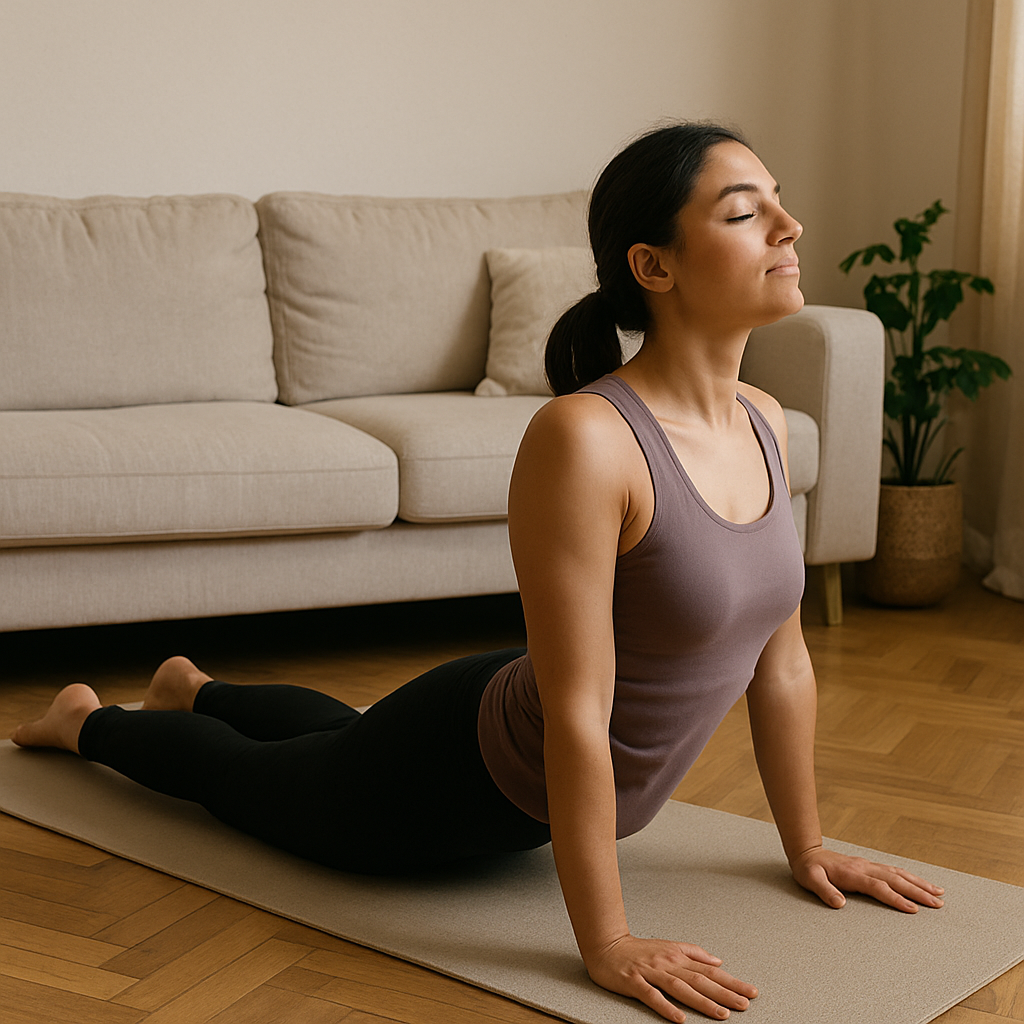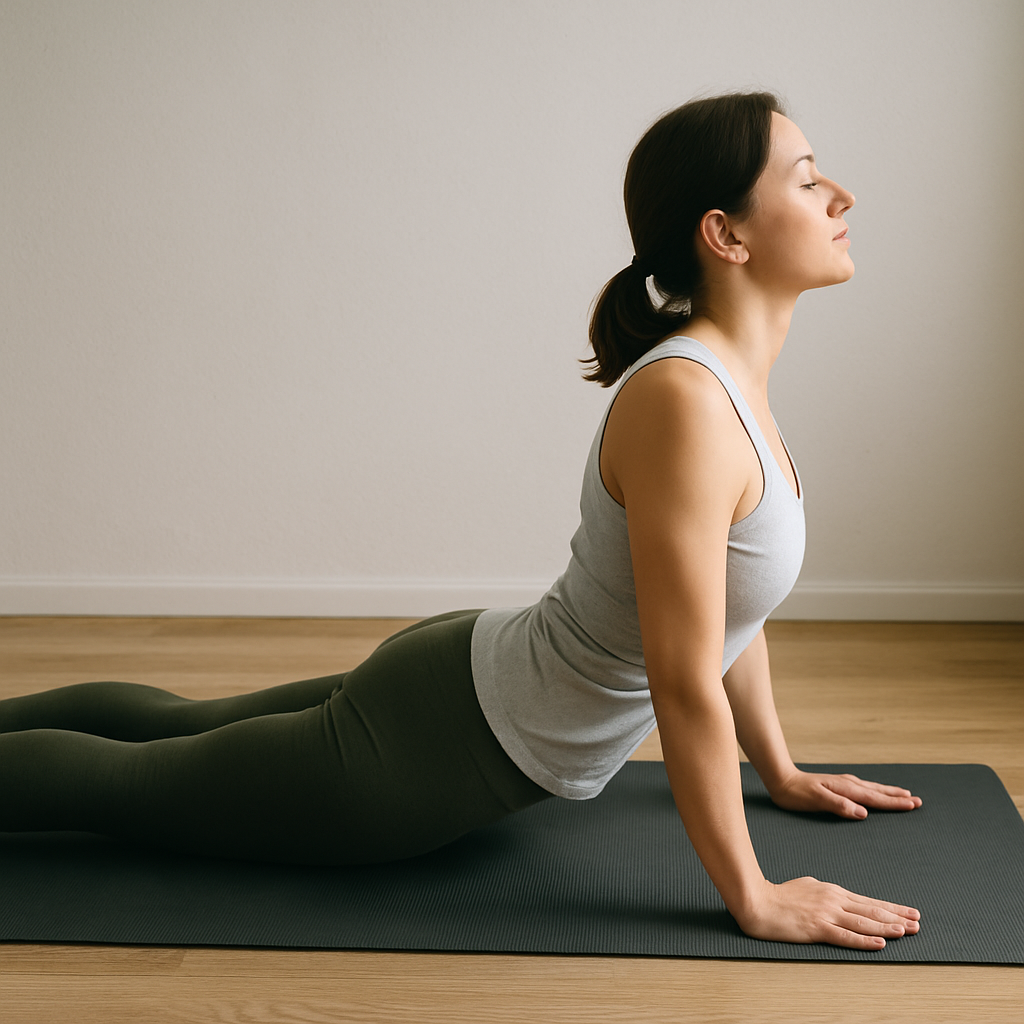Ask Ayurvedic doctor a question and get a consultation online on the problem of your concern in a free or paid mode. More than 2,000 experienced doctors work and wait for your questions on our site and help users to solve their health problems every day.
Shop Now in Our Store
What Is Bhujangasana: Meaning, Procedure, and Yoga Benefits

If you’ve been exploring yoga for a while, chances are you’ve come across the term Bhujangasana. But what is Bhujangasana, really? Why do so many yoga instructors include it in their classes, and what makes it such a cornerstone of flexibility and core strength? Whether you’re a beginner or someone looking to deepen your practice, understanding Bhujangasana yoga — also known as the Cobra Pose — is essential. It’s not just a backbend; it’s a gateway to better posture, improved digestion, and a more balanced state of mind.
In this article, we’re diving deep into everything about Bhujangasana: the meaning behind it, its benefits for your body and mind, how to do it properly (yep, there’s a right way!), and why it’s more than just a physical stretch. Ready? Let’s slither into it — pun totally intended 🐍
What Is Bhujangasana in Yoga and Its Sanskrit Meaning
So first off, let’s break down the term. Bhujangasana is a Sanskrit word where “Bhujanga” means “cobra” or “serpent,” and “asana” means “pose” or “posture.” Therefore, Bhujangasana is also known as the Cobra Pose. When performed correctly, the practitioner resembles a snake with its hood raised — alert, powerful, and still.
Part of the traditional sequence in Surya Namaskar (Sun Salutation), yoga Bhujangasana is considered a heart-opening pose. It expands the chest and stretches the front of the body, while strengthening the spine and toning the abdominal region. But there’s more to it than just the physical — the pose also has deep energetic and spiritual symbolism in yoga philosophy.

Bhujangasana Benefits for Body and Mind
One of the most beautiful things about this pose is how much it offers with seemingly simple effort. Practicing Bhujangasana yoga regularly can lead to a whole spectrum of benefits, both seen and felt.
Here’s what you might experience:
-
Improved posture: If you're glued to a screen most of the day (who isn't these days?), Bhujangasana can help counteract that hunch.
-
Spinal flexibility: The gentle backbend promotes spinal mobility and releases lower back tension.
-
Better digestion: Yes — stretching the abdomen actually stimulates your digestive organs.
-
Strengthens arms and shoulders: Especially when you focus on lifting with control.
-
Mental clarity and calmness: As your chest expands, you create space not just physically but emotionally. It’s kind of poetic.
Interestingly, many practitioners report feeling more “open” and emotionally lighter after practicing this asana. While that’s not something easily measured, it’s a feeling worth noting.
Oh and not to forget — people often ask, “Does Bhujangasana reduce belly fat?” While it’s not a magic trick, when combined with proper breathing and consistent practice, it can certainly help tone the abdominal area and support weight management.
How to Do Bhujangasana Step by Step
Let’s break it down — because doing this right matters. Knowing the procedure of Bhujangasana helps you avoid injury and get the most out of the posture.
Bhujangasana Procedure for Beginners
-
Start by lying flat on your stomach, legs extended back, tops of the feet pressing into the mat.
-
Place your palms under your shoulders. Elbows should be close to the ribs — not sticking out like chicken wings (been there).
-
Inhale slowly as you begin to lift your chest off the floor, using your back muscles. Keep your pelvis grounded.
-
Draw the shoulders back, open the heart space. Don't crank your neck too high; gaze forward or slightly up.
-
Hold the pose for 15 to 30 seconds, breathing deeply. Then exhale and slowly lower back down.
That’s the bhujangasana procedure in its most accessible form. Advanced versions go deeper, but this is more than enough to feel the magic.
Quick tip: Avoid using just your arms to push up. Think of your spine doing the lifting. It's safer — and more effective.
Precautions and Contraindications
As lovely as bhujangasana yoga is, it’s not for everyone, at least not in every situation. Just like with any yoga pose, knowing when not to do it is just as important as knowing how to do bhujangasana.
Here are some important precautions to keep in mind:
-
Pregnancy: Generally not recommended after the first trimester, as the pose puts pressure on the abdomen.
-
Back injuries: If you’ve got chronic lower back pain, herniated discs, or sciatica, consult a doctor or a trained yoga teacher before attempting the pose.
-
Recent abdominal surgeries: Since the pose stretches your belly area, it can interfere with healing.
-
Carpal tunnel syndrome: This pose requires you to press through your palms — which might not be suitable if you have wrist issues.
Even if none of these apply to you, always listen to your body. If something feels off, don’t push it. You’re not in a race; you’re in a relationship with your body. Big difference.
And oh! One more common mistake: Overarching the lower back too quickly. It's tempting to try and "look cool" in the pose, but going slow and keeping the alignment proper is way more important than how high you lift. Trust me on this — learned it the hard way.

Bhujangasana in Ayurveda and Pranic Flow
Beyond the physical stretch, about Bhujangasana, there’s a deeper dimension. In Ayurveda and yogic science, the bhujangasana pose is known to activate energy pathways, also called nadis. It specifically stimulates the Sushumna Nadi, which runs along the spine and is said to be the main channel for pranic energy.
Now, you might be thinking, "That sounds a little woo-woo." Fair — but for centuries, yogis have used this posture to balance the Manipura Chakra (Solar Plexus Chakra), associated with personal power, confidence, and willpower.
In Ayurveda, it's also believed that this pose aids agni — your digestive fire — helping your body metabolize not just food, but experiences and emotions. Isn’t that a beautiful idea?
While science may not yet confirm everything about pranic energy, there’s definitely truth to how this pose helps people feel more grounded, energized, and connected.
When and How to Include Bhujangasana in Daily Practice
Wondering when’s the best time to do it? Well, bhujangasana asana is pretty flexible (pun intended). It fits nicely into morning routines, especially as part of Surya Namaskar or a spinal flexibility flow.
Here’s how you can work it in:
-
Morning Stretch: Do it after a few gentle warm-ups to wake up your spine and digestive system.
-
Post-Workout Cooldown: It’s great for decompressing your back after strength training or cardio.
-
Evening Wind-Down: Just a couple of rounds with deep breathing can help you release tension before bed.
Aim for 3 to 5 rounds, holding for about 20–30 seconds each. And remember, it’s not about the quantity; it’s the quality of movement and breath that makes the difference.
Don’t skip the breath part — yoga bhujangasana is as much about how you breathe as how you move. Deep, slow inhales and soft exhales help your nervous system chill out and tune in.
Conclusion
So, to wrap it all up — what is Bhujangasana? It’s more than a yoga pose. It’s a powerful tool for transformation, both inside and out. Whether you’re seeking better posture, less back pain, stronger abs, or just a moment of calm in your day, bhujangasana yoga offers a lot for something that looks so simple.
We talked about the bhujangasana steps, explored its Sanskrit roots, touched on its role in pranic energy flow, and learned how to include it in our daily routines. And let’s not forget the list of solid bhujangasana benefits — improved digestion, toned muscles, stress relief, and spinal health.
Of course, it’s not a miracle move. No yoga pose is. But practiced with mindfulness, bhujangasana asana can absolutely be a catalyst for positive change.
And remember: You don’t have to be perfect. Some days, your back might not lift as high. Some days you might forget the exact bhujangasana procedure. That’s okay. The magic is in showing up, not showing off.
If this article helped you or made you rethink your approach to this ancient posture, share it with a friend, post it on your story, or bring it up in your next yoga class. Let's spread the snake love 🐍
FAQs
Why is it called Bhujangasana?
Great question! Bhujangasana is also known as Cobra Pose, and the name comes from Sanskrit: “Bhujanga” means serpent or cobra, and “asana” means pose. When you perform the pose, your lifted chest and head mimic a cobra raising its hood — hence the name.
Does Bhujangasana increase height?
Technically, Bhujangasana won’t make your bones grow (sorry, teens), but it can improve posture. By aligning your spine and reducing slouching, you may appear taller and feel more upright. So while you're not adding inches, you're definitely standing taller.
Does Bhujangasana reduce belly fat?
Ah, the million-dollar question! While no single yoga pose melts belly fat instantly, bhujangasana yoga helps tone the abdominal area by stretching and strengthening the core. Combine it with mindful eating, other exercises, and consistency — and yes, it can play a helpful role.
Final Thought
If you’ve been wondering how to start a more mindful movement practice, this is a great place to start. Learn how to do Bhujangasana, feel into your breath, and explore what this pose reveals in your body. You might be surprised what just one stretch can do when it’s done with full awareness.
Want to see visual examples or download a free printable guide on the procedure of Bhujangasana? We’ve got one! (Well, we will if you tell us you want it…)
This article is checked by the current qualified Dr Sujal Patil and can be considered a reliable source of information for users of the site.

